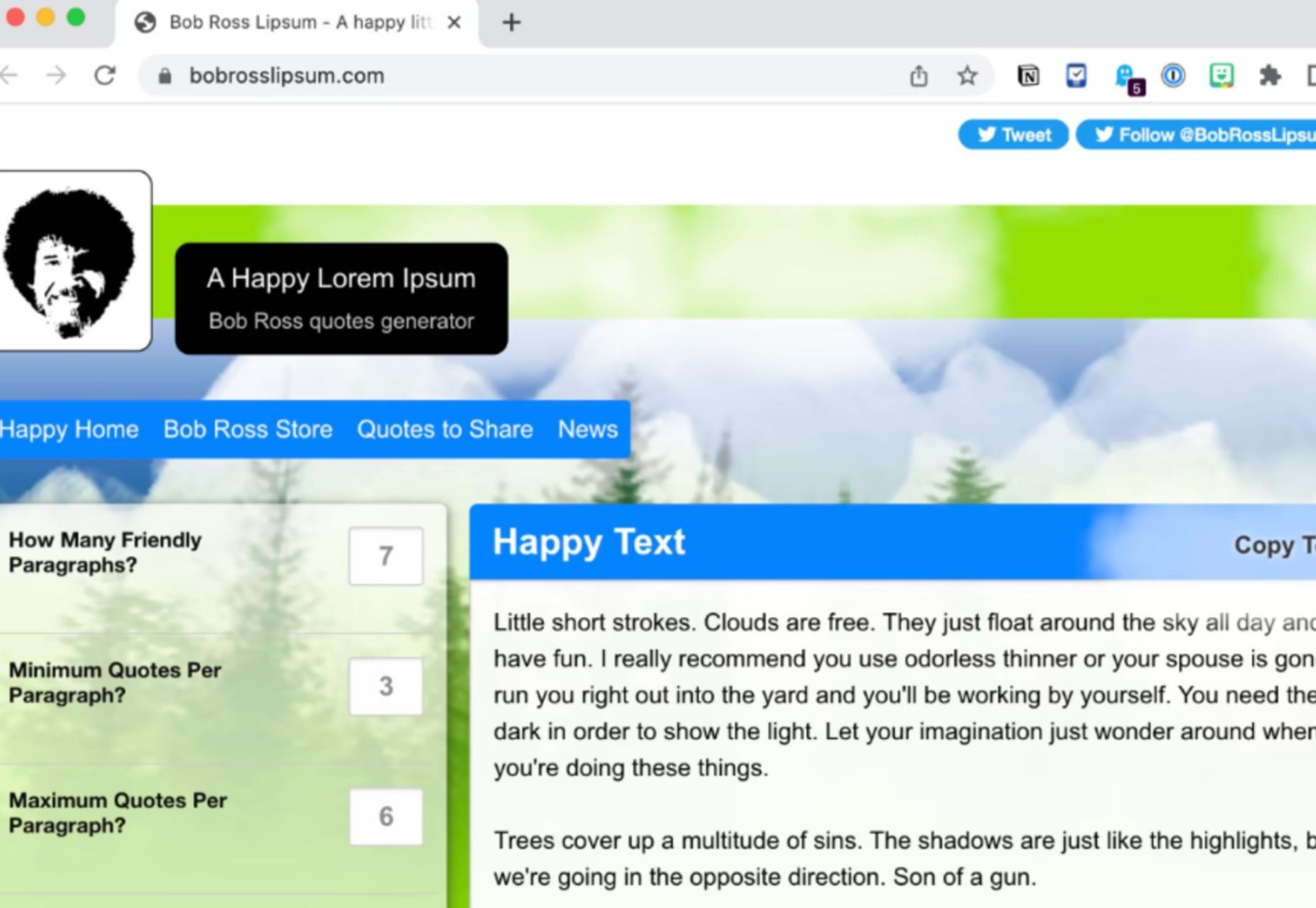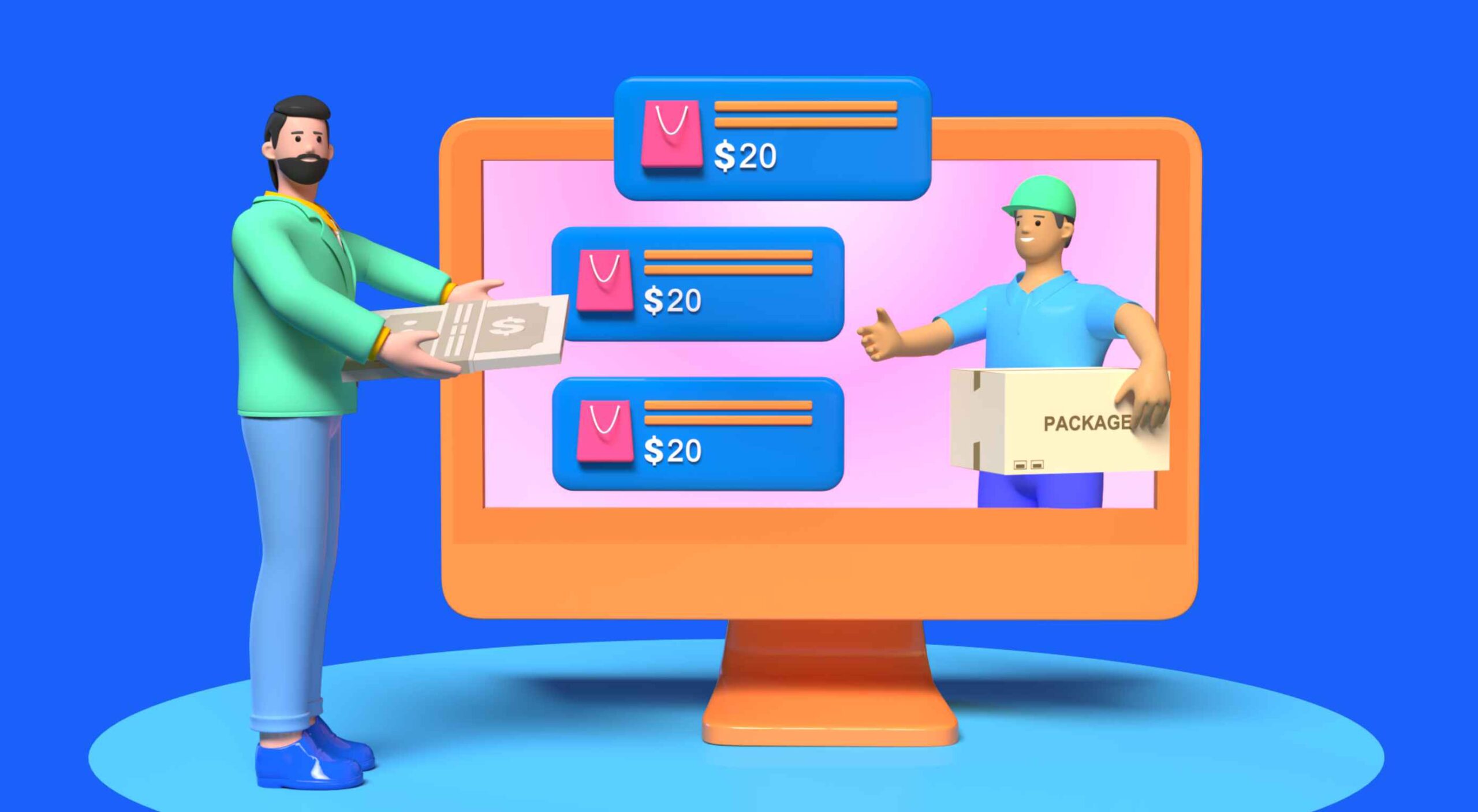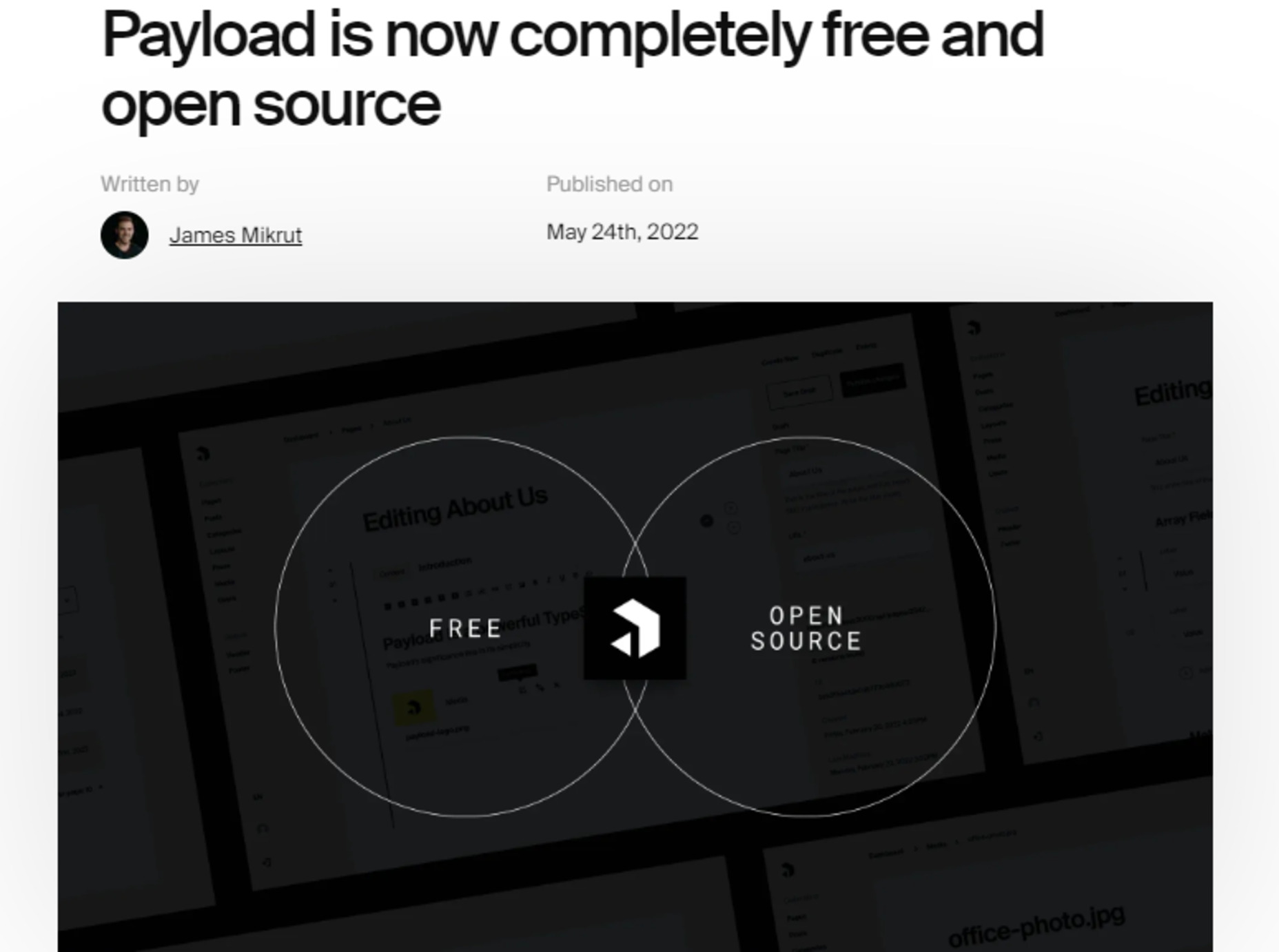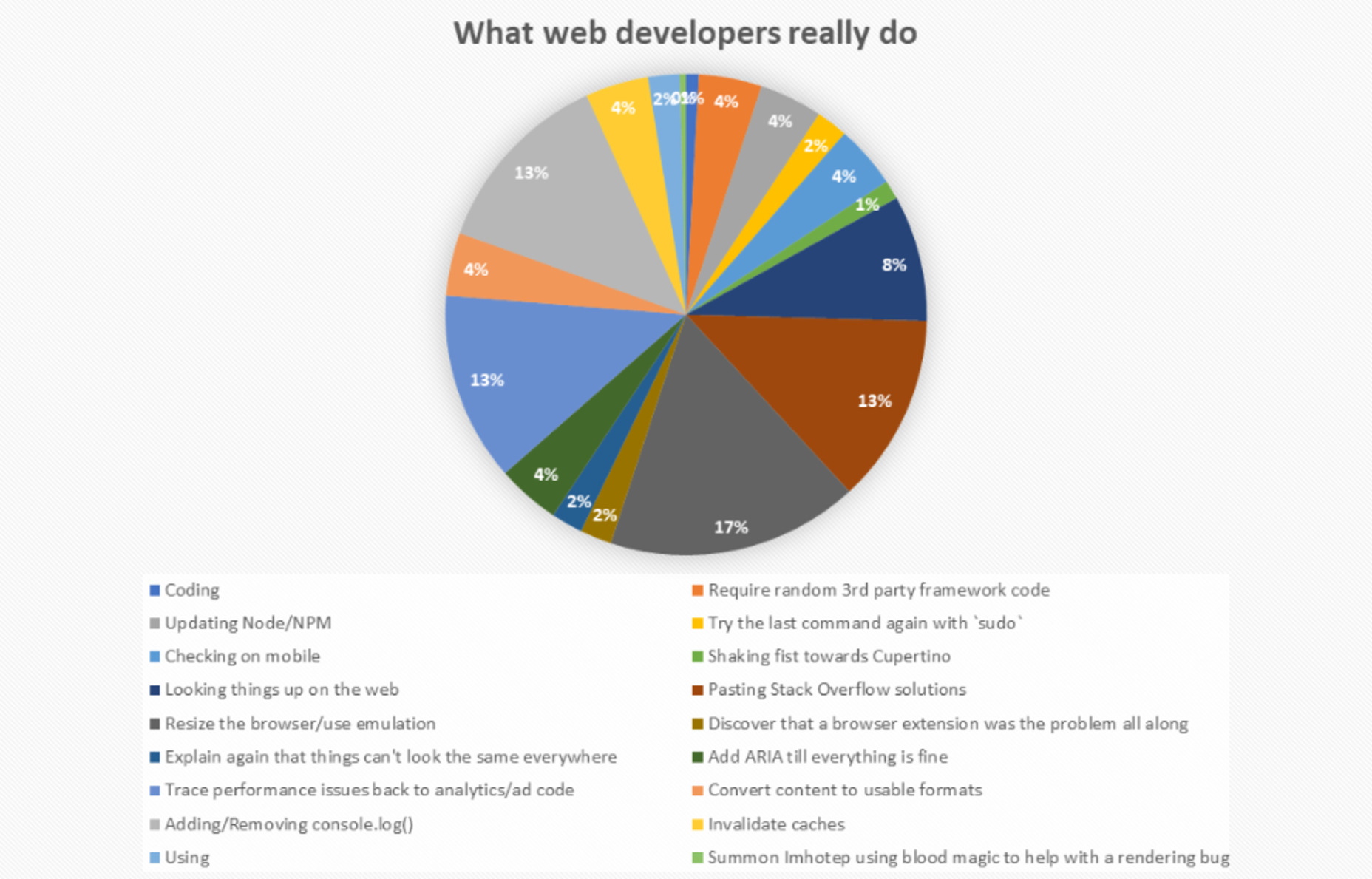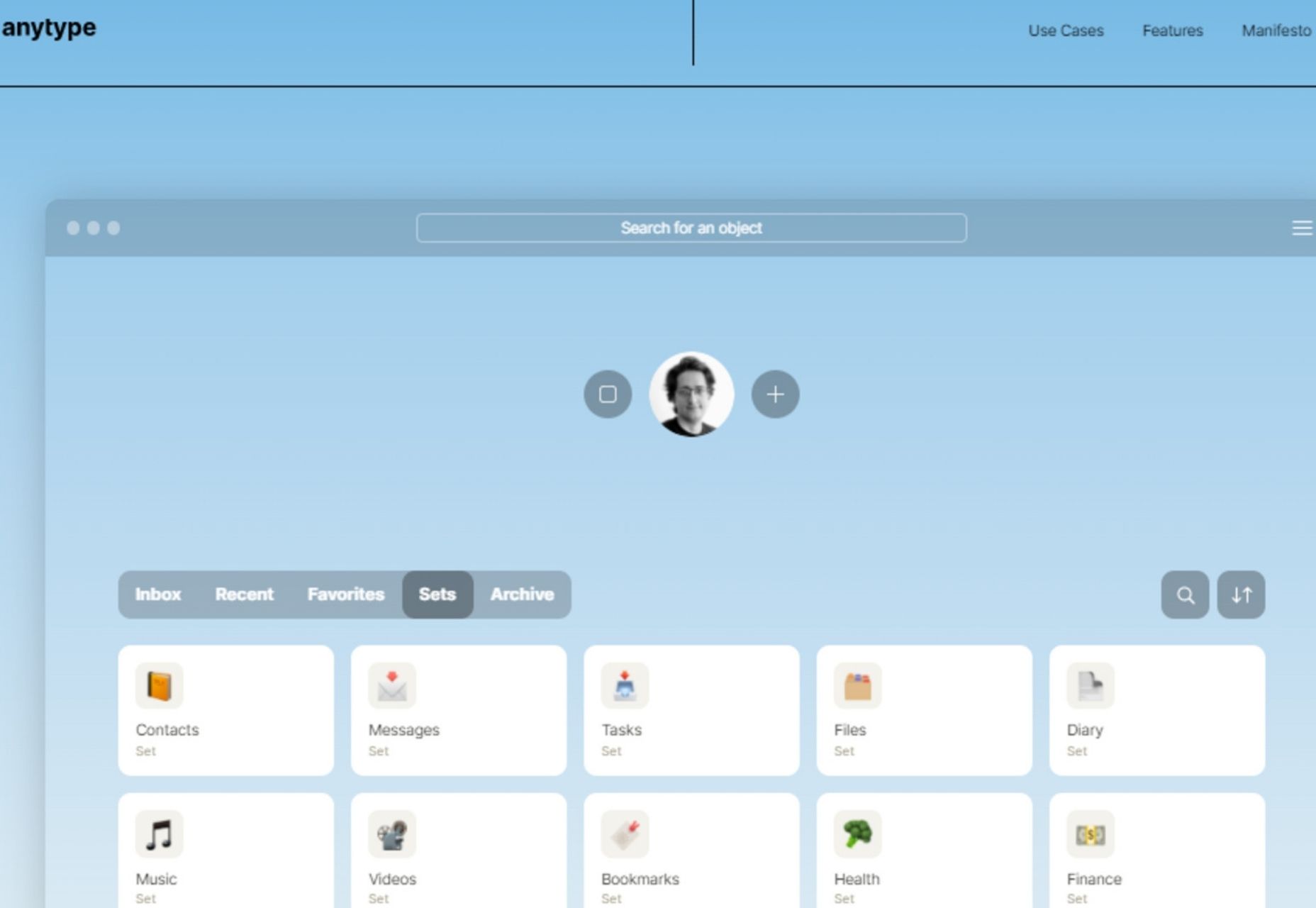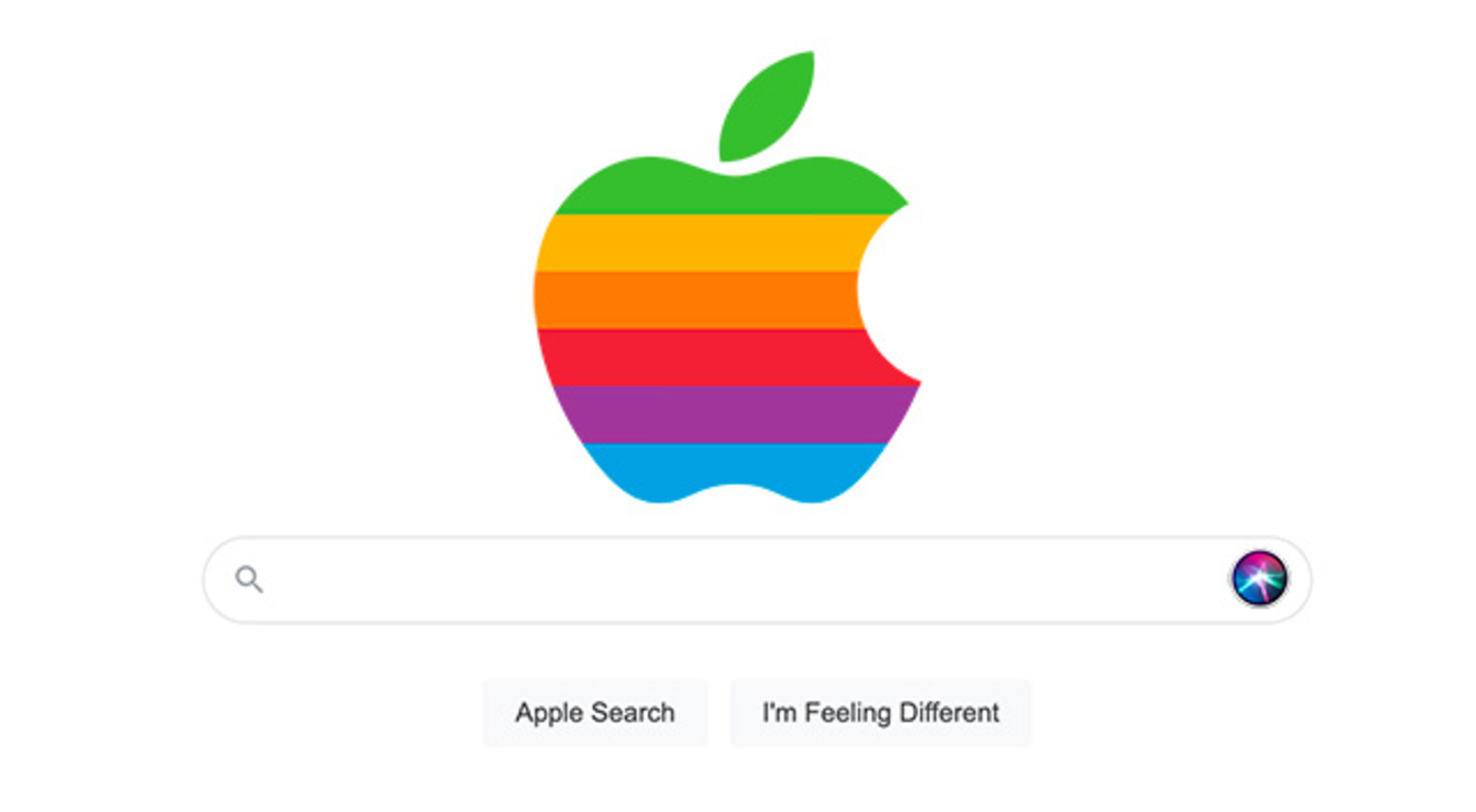Original Source: https://ecommerce-platforms.com/articles/the-best-podcast-hosting-platforms
The best podcast hosting platforms ensure you can take your audio content online quickly and earn a dedicated following in no time. Podcasting platforms like Buzzsprout or Anchor work by giving you access to a convenient range of tools for reaching your target audience. The question is, which platform is best?
These days, podcasting is rapidly growing in popularity, with around 80 million Americans listening to their favorite podcast on a weekly basis. As a convenient and easily accessible form of entertainment, podcasts have taken the world by storm. This means the number of tools available for hosting and sharing podcasts is growing too.
If you’re having a tough time figuring out which podcasting platform is best-suited to your needs, you’re in the right place. Today, we’re going to look at some of the best podcast hosting platforms in 2022, and what makes them so fantastic.
Best overall

Buzzsprout
Visit site
Full review
If you want a quick and simple way to get online as a beginner, then Buzzsprout can help you to get started with a very small learning curve.
Best for monetization

Anchor
Visit site
Full review
If you want a free way to get your content up and running on Spotify, then Anchor.FM could be the right tool for you.
Best for beginners

RSS.com
Visit site
RSS.com is one of the simplest tools for getting podcast creators active online, with convenient back-end environment and immersive analytics.
Best Podcast Hosting Platforms
BuzzsproutAnchor.fmRSS.comCaptivateSpreakerSimplecastTransistorCastosPodbeanResonateLibsynBlubrrySoundcloudbCastPodomatic
Buzzsprout – Best Overall Podcast Hosting Platform
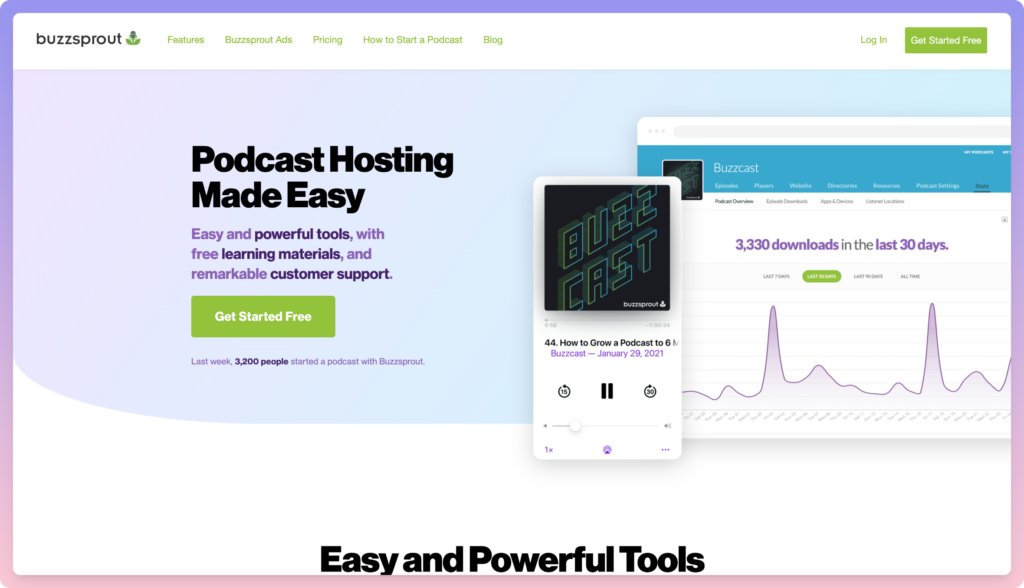
One of the better-known podcast hosting options on the market today, Buzzsprout promises to simplify the art of getting your content online. The solution comes with access to get your podcast listed in all of the top directories, like Apple Podcasts, Google Podcasts, Spotify, and TuneIn.
You’ll also have a fantastic range of reports and statistics to help you understand the preferences of your target audience and get to know your listeners a little better. With Buzzsprout, you can bring members of your team into the ecosystem, so it’s easy to work as a collaborative group to get your podcast in front of the right people.
Buzzsprout also offers a host of automatic optimization tools. All you need to do is upload your podcast and the platform sorts out everything else. The service even allows you to add pre and post-roll segments for advertising, and sharing previously published podcasts, and you can add chapter markers too.
Pricing
Pricing starts with a free package which allows you to upload 2 hours of content for month for up to 90 days. After that, paid options include:
$12 per month for up to 3 hours a month and indefinite hosting$18 per month for 6 hours a month and indefinite hosting$24 per month for up to 12 hours and indefinite hosting
All packages allow you to support unlimited team members, and access advanced stats.
Pros 👍
Cons 👎
Pros 👍
Easy to use environment
Lots of support for team members
Chapter markers and pre/post-roll segments
Automation elements for publishing podcasts
Get your content on all the right directories
Cons 👎
Limitations for free plan
Free plan includes ads
Who is it Best For? ✅
If you want a quick and simple way to get online as a beginner, then Buzzsprout can help you to get started with a very small learning curve.
Go to the top

Anchor.FM

Created by market-leading audio company, Spotify, Anchor.FM promises to simplify the process of getting your content online. The solution comes with built-in uploading, editing, and recording tools, so you can create and publish episodes in the same place.
You also get the option to distribute your podcasts to all of the top listening apps with a single tap, and host unlimited content with your account. Anchor FM comes with the opportunity to build subscriptions and sponsorships for your podcast, and you’ll also have access to a host of advanced analytics and insights to help you understand your audience.
Anchor even give you various tools for monetizing your content if you need help earning more cash through ads. Perhaps the biggest benefit of Anchor is you can access the features for free, no matter what kind of content you want to upload.
Pricing
Podcast is completely free to use, with unlimited hosting and streamlined distribution online, as well as a host of analytics and monetization options. However, you are limited to the kind of ads you can use to make your money online.
Pros 👍
Cons 👎
Pros 👍
Excellent range of easy-to-use features
Unlimited hosting option with quick distribution online
Monetize your content with ads by anchor
Insights into your target audience
Instant import from other podcasting services
Cons 👎
Limited monetization options
Not the largest number of features
Who is it Best For? ✅
If you want a free way to get your content up and running on Spotify, then Anchor.FM could be the right tool for you.
Go to the top

RSS.com

Probably the best-known podcast hosting solution on this list, RSS.com is one of the top ways to start and grow your podcast. You get unlimited audio storage, automatic distribution to the major directories, and sponsorship opportunities, all built-in.
Cross-platform analytics provide a behind-the-scenes look into listener habits, while a free podcast website improve your chances of reaching the right people online. RSS.com also comes with a host of useful tools for episode scheduling and managing your podcast experience. The easy-to-use backend even allows you to make your own unique episode and chapter art.
RSS.com also has a range of partnerships you can use to find the perfect sponsors for your show and get paid quickly. High-traffic podcasts can also opt-in for dynamically inserted advertisements.
Pricing
There are three packages available for RSS.com:
Student and NGO: $4.99 per month for students and NGOs with unlimited episodes, unlimited duration, cross-platform analytics, episode scheduling and more.All-in-one podcasting: $8.25 per month with all the features of Student and NGOs, plus monetization features via sponsors and 24/7 customer support.Pro and Enterprise: Tailored plans with dynamic ad insertion, custom analytics, 24/7 support and more.
Pros 👍
Cons 👎
Pros 👍
Excellent automatic scheduling and distribution
Customization features and free website
In-depth listener analytics
Monetization options with dedicated partners
Affordable pricing
Cons 👎
Slightly simpler features than some alternatives
Who is it Best For? ✅
RSS.com is one of the simplest tools for getting podcast creators active online, with convenient back-end environment and immersive analytics.
Go to the top

Captivate

Offering unlimited podcast hosting options for professional podcasters, Captivate is one of the best ways to grow your presence online. The solution comes with a fantastic intuitive interface, which allows easy access to a range of commonly-used features in a couple of clicks.
You can host an unlimited number of shows, with no limits on storage space or uploads. Instead, limitations are based on the number of downloads you achieve. The platform offers comprehensive analytics to help you track the reach of your various shows, and there’s even a convenient one-click sponsor-pitch creation tool for collating analytics.
The Captivate solution offers a host of monetization and growth models, as well as a “Call To Action” feature which you can use to add links to your podcast. You’ll also be able to list your podcast in all of the top directories, like Spotify and Apple.
Pricing
There are three pricing packages to choose from with Captivate, which differ only by the number of downloads you can support. The cheapest $19 per month plan allows for 12,000 downloads per month, while you can support 60,000 downloads with the $49 per month plan.
The most expensive $99 per month plan allows users to offer 150,000 downloads per month.
Pros 👍
Cons 👎
Pros 👍
All features available on every plan
Unlimited hosting and storage options
Instantly get your podcasts on the right directories
Transcription support included
Access to links for capturing leads in your podcast
Cons 👎
Can be quite expensive over time
Who is it Best For? ✅
Captivate is the right tool for established podcast creators who want to be able to upload a wide range of podcasts with unlimited storage.
Go to the top

Spreaker

Promising ease of use and flexibility, Speaker is a convenient hosting solution for podcast creators, with access to a dedicated “live podcasting” feature. This feature means you can allow your users to listen to you in real-time, and even send comments and interact through a chat box.
The Spreaker podcast hosting platform also comes with a studio app which allows you to access everything you need to record and publish your podcast from anywhere. There’s also a convenient upload and distribute option which allows you to share your content in a single click, with directories like iHeart Podcast network, and Spotify.
You can automatically integrate advertising into your podcasts with Spreaker too, which is ideal if you’re looking for convenient ways to start monetizing your creations. The solution makes everything as simple and straightforward as possible.
Pricing
There are various pricing plans available for Spreaker depending on your needs. The first option is the free plan which allows you to upload up to 10 episodes of your podcast, though you can’t make money with ads. After that, options include:
On-air talent: $8 per month with auto-uploads and 100 hours of storage.Anchorman: $50 per month with ads, custom RSS feeds, full statistics, and 1,500 hours of storage, as well as 12 months of statistics.Broadcaster: $20 month with 500 hours of storage, 12 months of statistics, adds, in-app support, and automatic uploads.Publisher: $120 per month with full statistics, enhanced private podcasts, more customizations for your podcast player, and an ad campaign manager. Plus, you get 24 months of statistics and unlimited storage.
Pros 👍
Cons 👎
Pros 👍
Easy to make money on your podcasts
Automatically upload content to directories
Lots of support for live streaming
Easy-to-use distribution features
Analytics and advanced statistics
Cons 👎
Can be expensive to get all the features
Who is it Best For? ✅
If you’re looking for a podcast hosting solution with live streaming and access to instant monetization, Spreaker could be the tool for you.
Go to the top

Simplecast

Simplecast is one of the most advanced podcast hosting solutions on the market for companies who want to learn as much as they can about their target audience. The company combines hosting options with in-depth analytics and insights, to guide your publishing strategy.
With Simplecast, you can get unlimited storage and uploads even on the cheapest plan, as well as access to your own customizable show website with a dedicated domain. You can create multiple shows on a single account and create embeddable episode web players too.
The detailed analytics provided for your podcast strategy is one of the most valuable things about Simplecast. You can get a full overview of what kind of content your customers are listening to, as well as what technology they’re using, and where they come from. You can even compare analytics across multiple episodes.
Pricing
There’s a 14-day trial for Simplecast to get you started experimenting with the features. After that, you’ll have three packages to choose from:
Basic: $15 per month with 2 team member seats, unlimited storage and uploads, easy distribution, basic analytics, a customizable website and domain, and embeddable players for your podcast.Essential: $35 per month for all the features of Basic, plus additional team member seats (4) more web players, and analytics for location, unique listener insights, web player and technology details.Growth: $85 per month for everything in Essential plus 9 team member seats, more comparison metrics, detailed location analytics, and network analytics.
Pros 👍
Cons 👎
Pros 👍
Easy to use with lots of simple features
Fantastic for unlimited and easy uploads
Dedicated domain and website
Detailed analytics and insights
Fantastic web player
Cons 👎
Can be expensive for some packages
Takes a while to master all the reports.
Who is it Best For? ✅
Simplecast is best for learning as much as possible about your target audience, so you can create more customized content in future.
Go to the top

Transistor
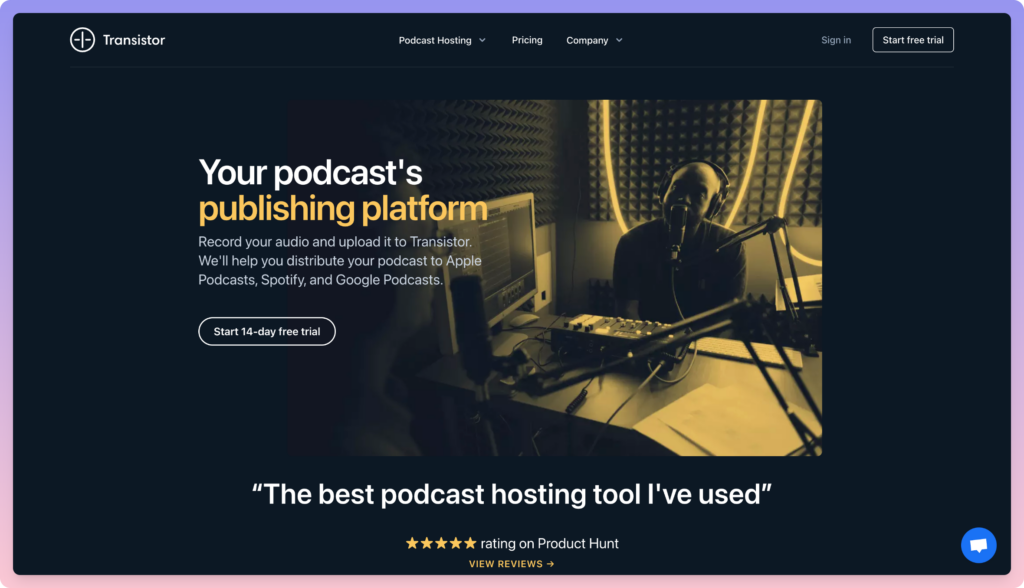
Transistor is a powerful publishing platform which allows companies and individuals to publish infinite podcasts for a single monthly price. The hosting tool comes with a built-in website generator, so you can create an eye-catching online presence for your podcast too.
Transistor helps to rapidly distribute your podcast to all of the top platforms, like Spotify, Apple Podcasts, and Google Podcasts. You also get a customizable Podcast player you can embed into an existing website if you already have a presence online.
As an added benefit, you’ll also get a host of easy-to-follow analytics and reports to show you everything you need to know about your subscribers, listener trends, and download patterns. This ensures you can create more impactful content in the future.
Pricing
There’s a 14-day free trial to help you out initially, followed by a range of monthly pricing packages. All packages include access to unlimited podcasts.
Starter: $19 per month for live customer support, advanced analytics, built-in podcast website, 2 additional team members, 50 private podcast subscribers and 15,000 downloads a month.Professional: $49 per month for all the features of Starter, plus 5 additional team members, dynamic ads, dynamic show notes, 500 subscribers, and 75,000 monthly downloads.Business: $99 per month for all the features of Professional, plus 10 additional team members, 200,000 monthly downloads, and 3,000 subscribers.
Pros 👍
Cons 👎
Pros 👍
Unlimited podcasts on every package
Built-in website creation tool
Custom podcast player
Access to dynamic ads and show notes
Suitable for teams
Cons 👎
Can get quite expensive for downloads
Who is it Best For? ✅
Transistor is great if you want to host multiple podcasts at the same time and distribute them to all of the top channels.
Go to the top

Castos

An all-in-one platform for today’s podcast content creators, Castos ensures you can automate almost every aspect of building a fantastic podcast. You get all the tools you need to grow your audience, connect with your community, and generate new opportunities through audio.
With Castos, content creators can publish unlimited podcasts, with as many episodes as they choose. There are no extra fees for creating longer episodes or launching secondary shows. There’s also a range of tools for monetizing your podcasts and collecting direct revenue from listeners.
For learning more about your community, Castos offers a variety of analytics tools, with easy-to-digest insights into top episodes, listening behavior, audience demographics, total listens, and more. The more you learn, the more likely you are to increase engagement with your audience. There’s also republishing for YouTube and transcriptions to expand your reach.
Pricing
Like many podcast solutions, Castos comes with a 14-day trial to introduce you to its various features. After that, there are four packages to choose from, all with unlimited podcasts:
Starter: $19 per month for unlimited episodes and podcasts, in-depth listener analytics, 100 private subscribers, and 20,000 downloads per month.Growth: $49 per month for all the features of Starter, video republishing to YouTube, headliner audiogram integrations, 250 subscribers, and 75,000 downloads a month.Pro: $99 per month for all the features of Growth, plus file hosting, advanced analytics, 500 private subscribers, and 200,000 downloads per month.Premium: $499 per month with all the features of Pro, plus single sign-on, increased limits, custom contracts and invoices, and an account manager.
Pros 👍
Cons 👎
Pros 👍
Unlimited episodes and podcasts on all plans
Excellent transcription service
YouTube republishing included
In-depth audience and listener insights
Easy-to-use environment
Cons 👎
Very expensive for some packages
Who is it Best For? ✅
If you’re looking for a convenient tool with unlimited podcasts, which you can use to publish across a range of channels, Castos is a great choice.
Go to the top

Podbean

Combining ease of use with powerful features, Podbean is a state-of-the-art tool for creating and promoting podcasts. Everything you need for successful podcasting comes already built-in, from tools to make your own podcast from your smartphone with a recording app, to professional-quality live streaming. You can also publish video alongside your podcasts.
Podbean helps to get your name out there, with promotional tools to bring awareness to your social accounts, websites, and your podcast lists on the top distribution sites. You can get your episodes into a range of environments quickly and effectively and monetize your podcast in no time.
There’s an ads marketplace, dynamic ad insertion technology, and even the option to sell premium content or get donations straight from listeners.
Pricing
Podbean is one of the few podcast hosting solutions which includes a free package for beginners. The free plan gives you up to 5 hours of storage space and 100GB of monthly bandwidth. You can also build your own site and distribute to all the major apps. Other packages include:
Unlimited audio: $9 per month for unlimited storage space and bandwidth, all the features of Basic, and custom designs. You can also access a host of monetization tools.Unlimited Plus: $29 per month for all the features of Unlimited, plus multiple podcast channels, video podcasts, and access to more monetization options.Business: $99 per month for all the features of Unlimited Plus, plus SSO authentication, groups, engagement intel and multiple admins.
Pros 👍
Cons 👎
Pros 👍
Video and audio podcasting in one package
Dynamic ad insertion and monetization technology
Excellent easy-to-use environment
Lots of customization methods
Useful analytics
Cons 👎
Can have a small learning curve
Who is it Best For? ✅
If you want to access video and audio podcasts, as well as live streaming in the same environment, Podbean is for you.
Go to the top

Resonate

Resonate Recordings promises an easier way to podcast with a comprehensive all-in-one solution. The company is already trusted by major companies like Honda and EA Sports. With thousands of users worldwide, Resonate has made a name for itself by helping to produce market-leading podcasts from countless major companies.
The Podcast hosting platform doesn’t just allow you to host your podcast, it also gives you everything you need for audio production and marketing. You get content editing tools, launching features, cover art, video production, and podcast marketing in the same place.
For companies who need a more comprehensive solution for podcasting, you can also get a custom end-to-end solution with a blend of all the producer services, video and audio production tools, and advertising solutions you need built-in.
Pricing
Pricing for Resonate varies depending on what you need. You’ll need to go through a slightly complicated process of explaining all the features you want to access to get the right pricing for your specific requirements.
Pros 👍
Cons 👎
Pros 👍
Excellent range of marketing tools
Support for in-app video and audio production
Content editing and launching features included
Powerful back-end analytics
Comprehensive all-in-one technology
Cons 👎
Complicated pricing
Who is it Best For? ✅
Resonate is ideal if you’re looking for an all-in-one package to support your podcast creation, publishing, and marketing efforts.
Go to the top

Libsyn
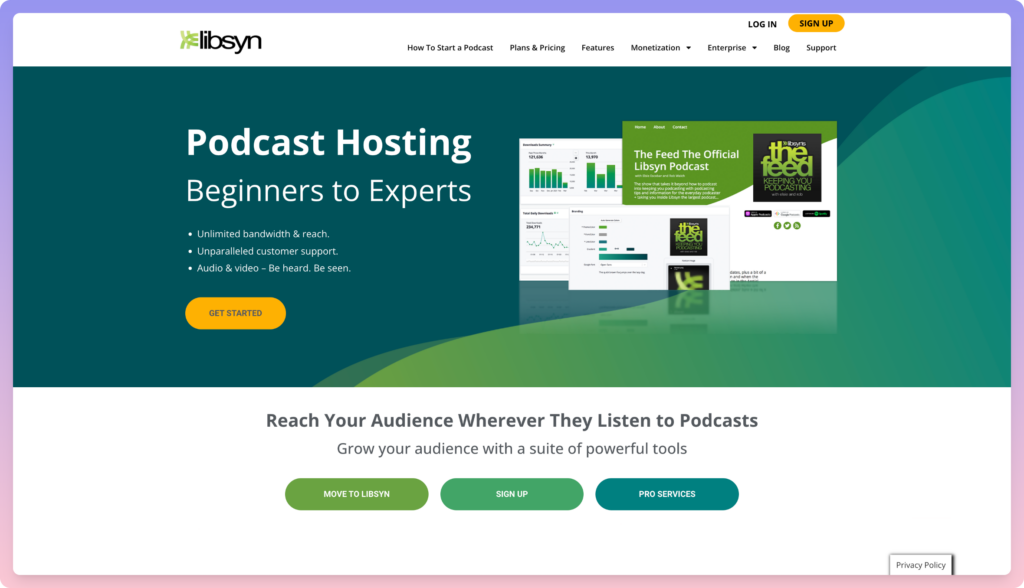
One of the most popular podcast hosting sites on the market, Libsyn has plenty of functionality to offer old and new podcasters alike. The company has been around for a long time – almost 20 years – far beyond podcasting became a mainstream concept.
With lots of unique features and simple podcasting tools, Libsyn can help you to build your following in no time. You’ll have access to unlimited bandwidth, so you don’t have to worry about running out of access if you end up with a popular podcast. Libsyn also has a very easy-to-use interface.
Unfortunately, Libsyn is a little confusing when it comes to pricing, as only the basic services for uploading new episodes of your podcasts are available in the standard package. You need to buy separate capabilities, like monetization features as add-ons.
Pricing
Libsyn hosting plans are pretty affordable for hours of audio upload. You can spend $5 per month on 50 MB of uploads per month, ore $15 per month on up to 250 MB. There’s also a $20 plan for 400 MB and a $40 plan for 800 MB.
You can also access more storage, with Advanced 1500, for 1500 MB at $75 per month, or Advanced 3000 for 3000MB at $150 monthly.
Pros 👍
Cons 👎
Pros 👍
Easy to use interface
Unlimited bandwidth for your podcast episodes
Excellent for uploading to the podcast directories
Support for plenty of storage
Paid plans can be quite affordable
Cons 👎
Add-on costs are a little confusing
Who is it Best For? ✅
If you want basic podcast hosting, without the extra bells and whistles, but you still want unlimited bandwidth and plenty of storage space, Libsyn is for you.
Go to the top

Blubrry
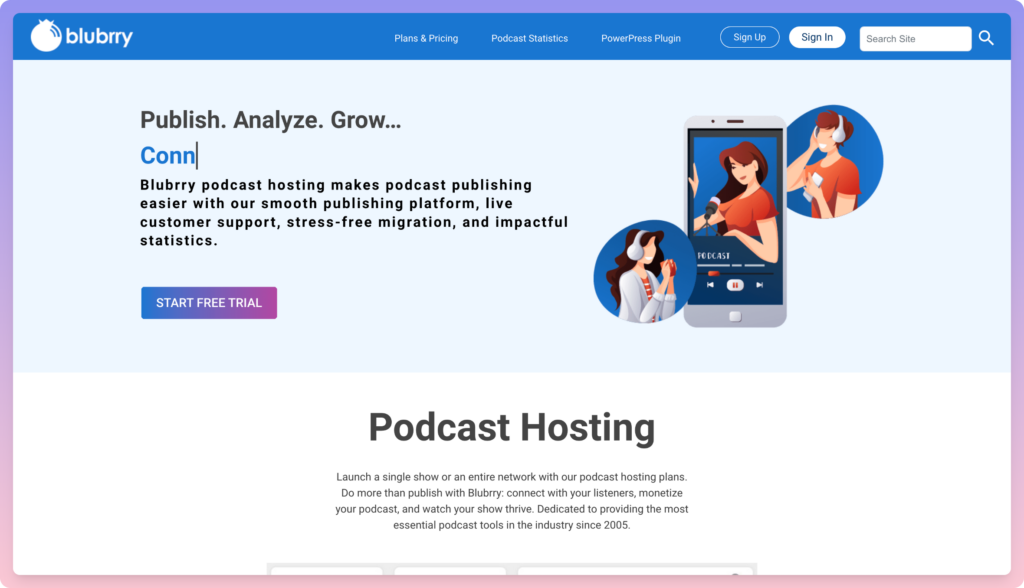
Easily one of the most flexible podcast hosting solutions on the market, Blubrry will help you to share your new podcast with your audience in no time. If you already have an existing WordPress Website, there’s also a podcasting WordPress plugin available called PowerPress, which makes it easy to manage your podcast directly within your website.
The WordPress integration is perhaps the most compelling part of Blubrry, because you can upload your top podcast episodes directly to your hosting provider with minimal effort. At the same time, you can still submit your podcast directly to Apple and Google Podcasts.
Blubrry gives you plenty of access to statistics within your Podcast app, and unlimited storage options, so you never run out of data.
Pricing
There are a few different pricing options available:
Standard: The standard plan for Blubrry starts at $12 per month, with 125 MB of monthly storage, and standard statistics, as well as phone and email support, unlimited downloads, essential themes and plugins, and free episode migration.Advanced: $20 per month with all the features of Standard, plus unlimited downloads, free WordPress site access and the Powerpress plugin, domain mapping, and advanced statistics. You can also create a custom embed player.Professional hosting: $100 per month for advanced hosting with in-depth statistics and intelligent ad insertion.
Pros 👍
Cons 👎
Pros 👍
Excellent storage and bandwidth levels
Dynamic ad insertion available
Powerful WordPress site plugin
Customizable embedded player for podcast episodes
Exceptional insights
Cons 👎
Can be expensive to access all the features
Who is it Best For? ✅
Blubrry is ideal if you want to embed podcast functionality into your existing WordPress website, or build your own site around your podcast.
Go to the top

Soundcloud

Easily one of the better-known ways to get your podcast online and into your own website, Soundcloud is a popular music and podcast hosting solution. The tool allows users to embed their podcast episodes into their existing site from Soundcloud, just by placing an URL within a page or WordPress post.
As one of the best podcast hosting services around, Soundcloud is free for up to 3 hours of content, which make sit a good choice if you’re not sure how well your podcast is likely to take off. The paid plans available from the company also come with more features to explore, including easy submission to iTunes (Apple Podcasts) and analytics.
Although this service is easy to use, it does have some limitations in terms of flexibility.
Pricing
As mentioned above, you can upload a small amount of content with SoundCloud without spending a penny. The paid plans start at £2.50 per month when you’re paying for a yearly package, allowing you to distribute to other channels. You can also get a £7.50 plan with access to unlimited upload time, and monetization.
Pros 👍
Cons 👎
Pros 👍
Very easy to use environment which integrates with your website
Access to tracking and analytical tools
Monetization and distribution features available
Easy to use embeddable player
Free package available
Cons 👎
Limited flexibility with podcast players
Not a lot of advanced features
Who is it Best For? ✅
SoundCloud is ideal for true beginners in the podcast space, who are just getting started with testing the waters. This could be the ideal service for you if you’re new to podcasting.
Go to the top

bCast
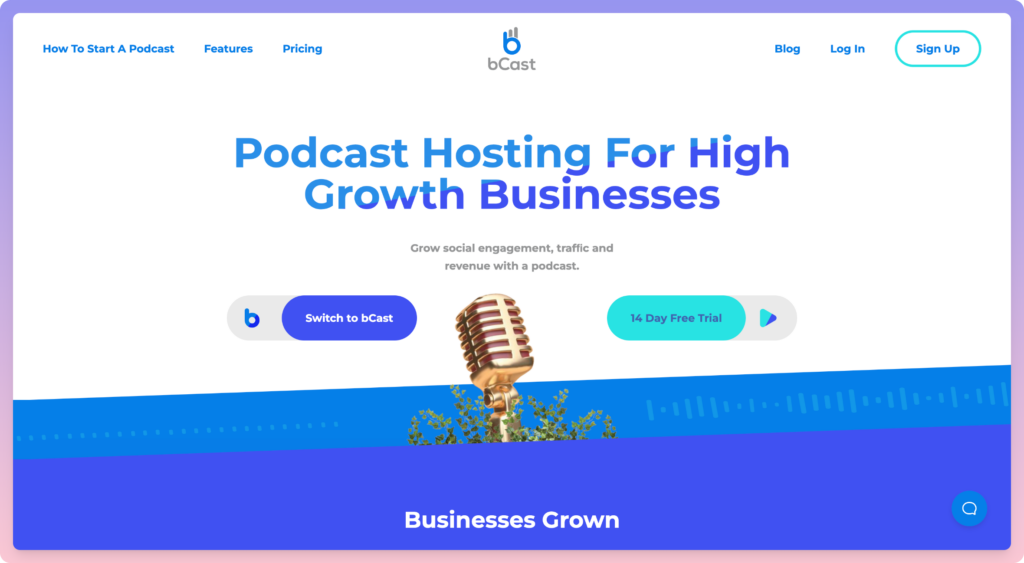
Advertised as podcast hosting solutions for high-growth businesses, bCast supports companies in growing social engagement and revenue with their podcasting service. The company is excellent for marketing companies taking advantage of podcasts for advertising.
Features like the Audio Insert option mean you can place CTAs into your podcasts, and encourage people to sign up for webinars, email lists and more. There are also fantastic automatic transcription services, and automated guest notifications when an episode goes live.
bCast offers the tools you need to not only get your content online, but start sharing with customers through social media and other channels too.
Pricing
Pricing starts at an affordable $15 per month for up to 10,000 downloads and unlimited episodes and storage. You also get a host of bonus features like private podcasts, custom domains, transcription, and advanced analytics included.
Upgrading to the Growth package at $35 per month gives you support for around 50,000 downloads each month, unlimited podcasts and storage, and you can publish up to 3 podcasts. You can also share directly to YouTube and other channels. The Legendary $75 plan makes everything virtually unlimited, with Premium support and the option to remove bCast branding.
Pros 👍
Cons 👎
Pros 👍
Excellent unique features for marketing and promotion
Automatic transcriptions
Direct publishing to other channels
In-depth insights and analytics
Audio messages and inserts
Cons 👎
You’ll need the most expensive package to remove the branding
Who is it Best For? ✅
BCast is ideal if you’re looking for podcast hosting with a strong focus on marketing and brand promotion.
Go to the top

Podomatic

Offering an easy solution to starting your own podcast and monetizing your content, Podomatic ensures you can record, publish, distribute, and grow your podcast fast. The service comes with all the tools you need to upload and store multiple episodes of your podcast via iOS and Android apps, so you’re free to create on a mobile basis.
The tools built into Podomatic ensure you can instantly push your content to the right directories, and promote everything in front of the right audience. You’ll even be able to access crowdsourcing revenue through Patreon connectivity and access to other similar tools.
There’s a free account for up to 500MB of storage and 15 GB of bandwidth. You can also test the Pro package with all the bonus analytics and insights that come with it for 60 days.
Pricing
Paid packages start at $2.49 for 100 GB of bandwidth per month and 2GB of storage. Pro Plus is available for $8.32 with 200 GB of bandwidth and 3GB of storage for $8.32. Alternatively, the Platinum package is $20.82 per month with 500GB of bandwidth and 5GB of storage.
Pros 👍
Cons 👎
Pros 👍
Convenient visual analytics
Easy-to-use back-end environment
Revenue through Patreon
Powerful mobile apps available
Easy distribution to your chosen directories
Cons 👎
Requires an advanced plan for the best features
Who is it Best For? ✅
If you want an easy way to start uploading content from your phone and monetizing your podcast, Podomatic is a great choice.
Go to the top

Choosing the best Podcasting Platform
The best podcast hosting platform for you will depend on a host of different factors. There is no shortage of options out there, many of which include the option to immediately send your content to locations like Amazon Alexa and Google play.
When looking for your podcasting solution, it’s worth thinking about whether you want to simply add a media player to an existing website, or you need the tools to create your own website from scratch with a dedicated domain name.
It’s also worth looking at concepts like ease of use, and how much support you’ll get to take your podcast online. While there are usually plenty of tutorials to get you started, it’s a good idea to go with a service that’s relatively easy to use.
The post The Best Podcast Hosting Platforms in 2022 appeared first on Ecommerce Platforms.

























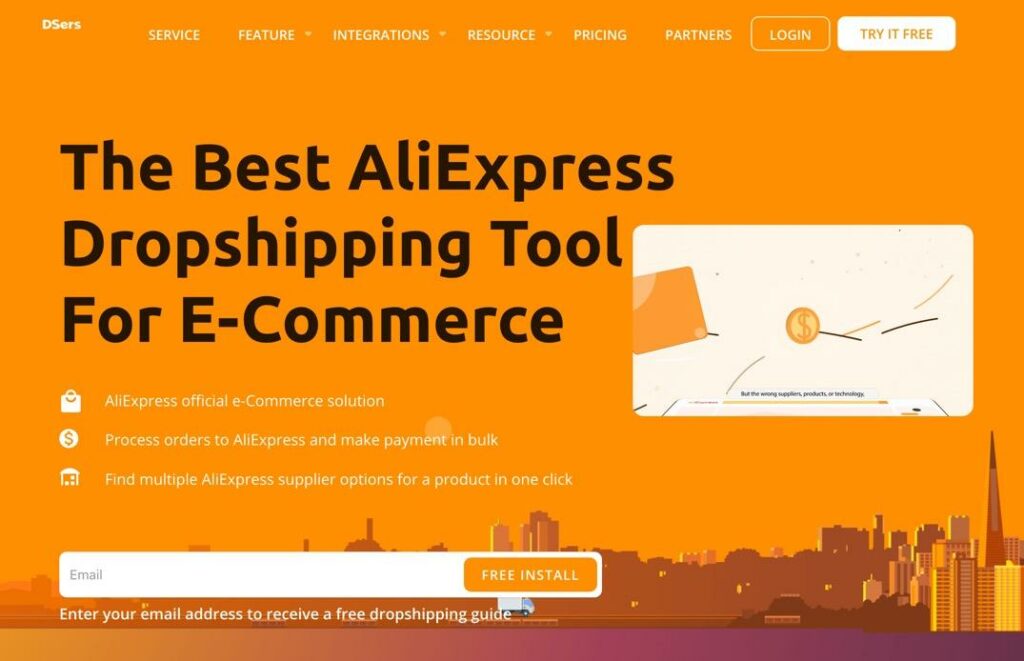
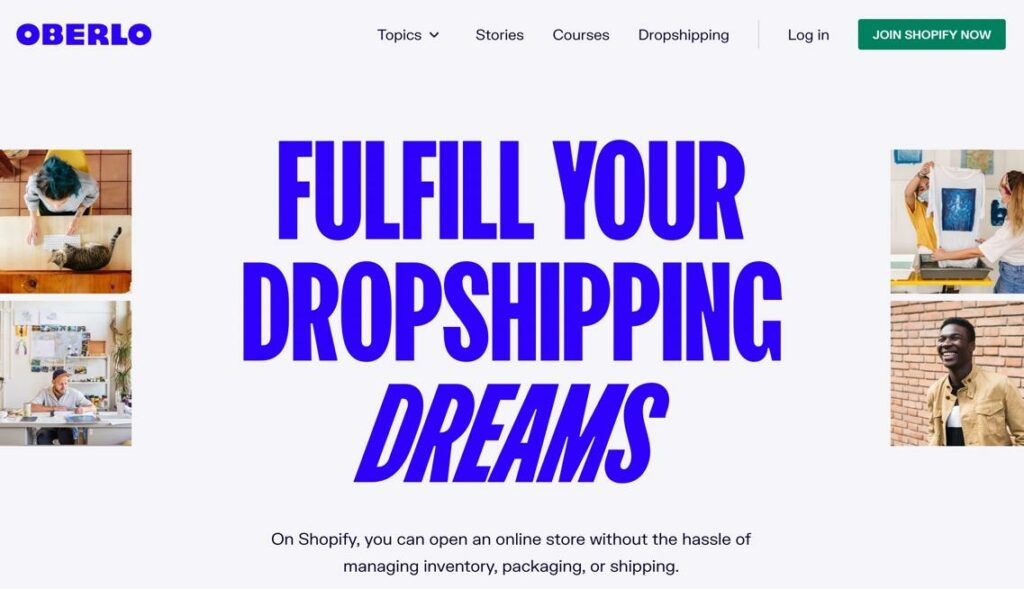


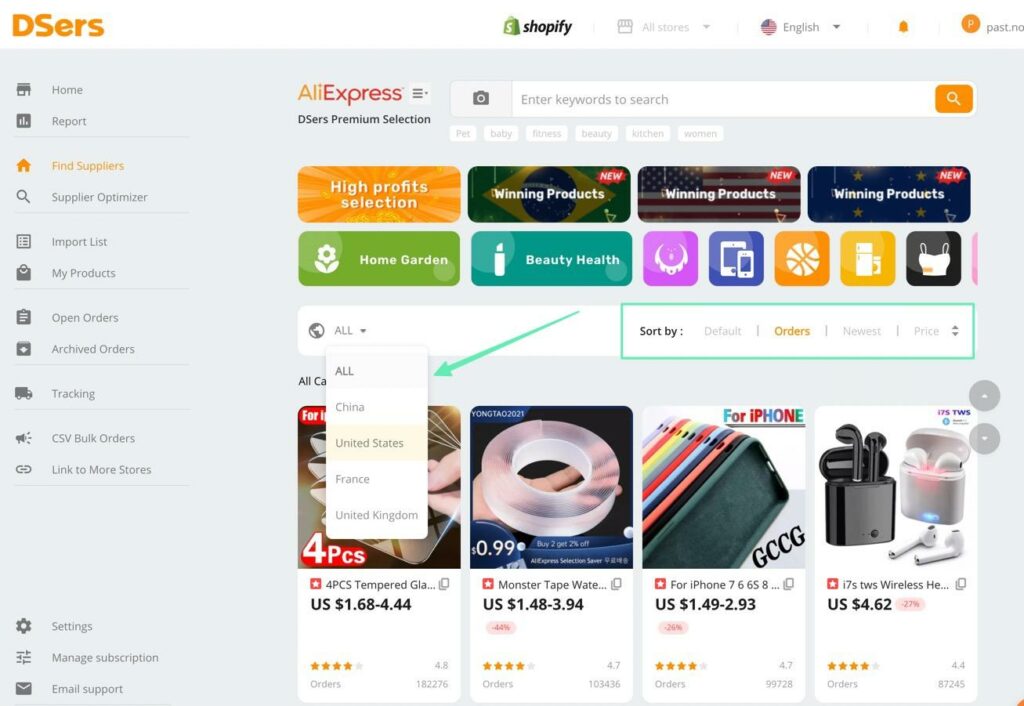

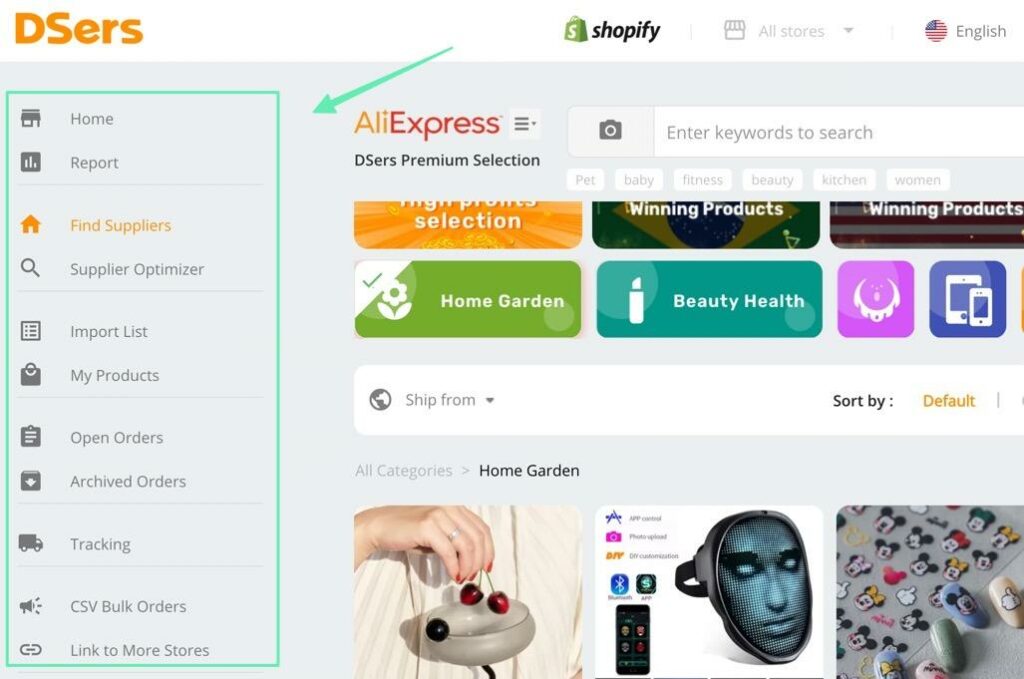
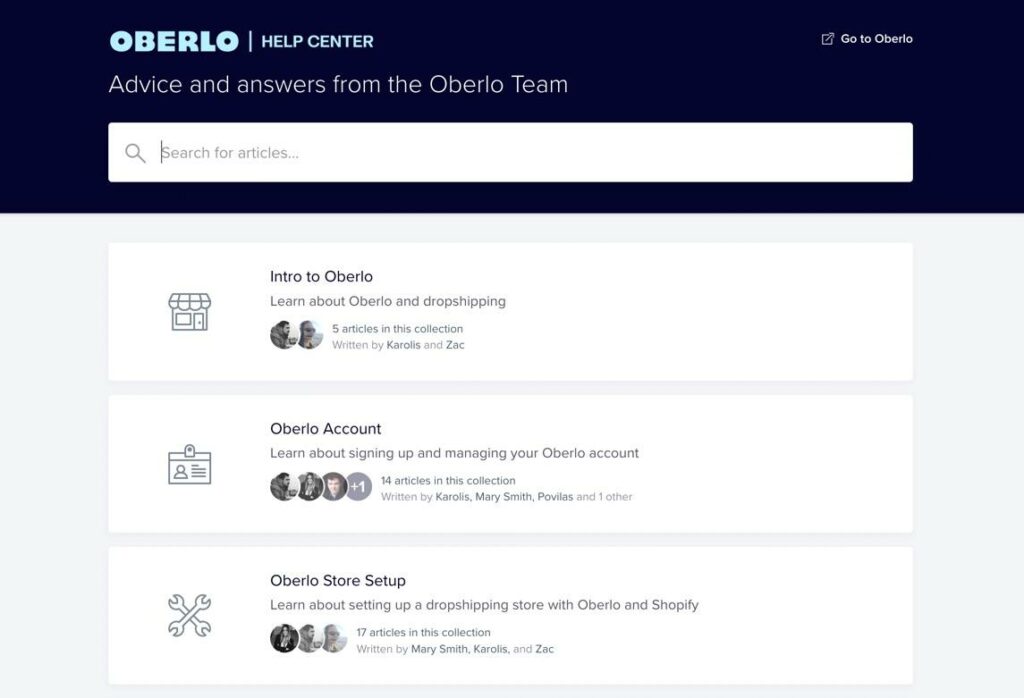
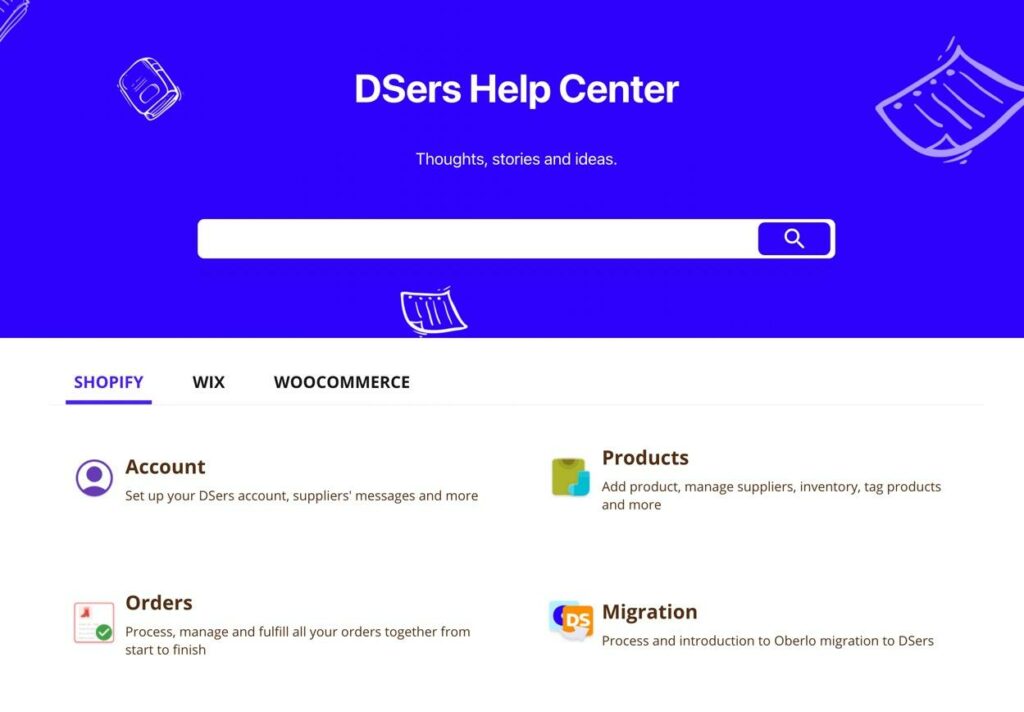



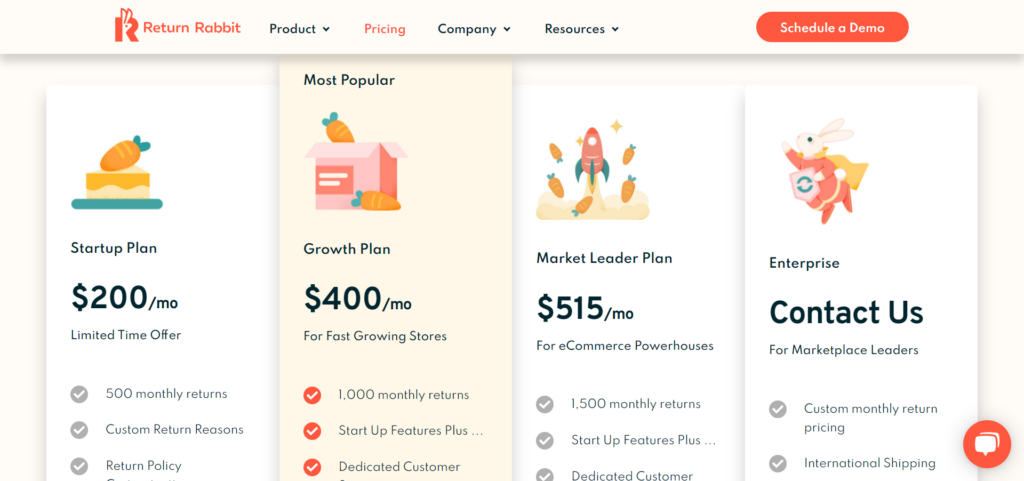
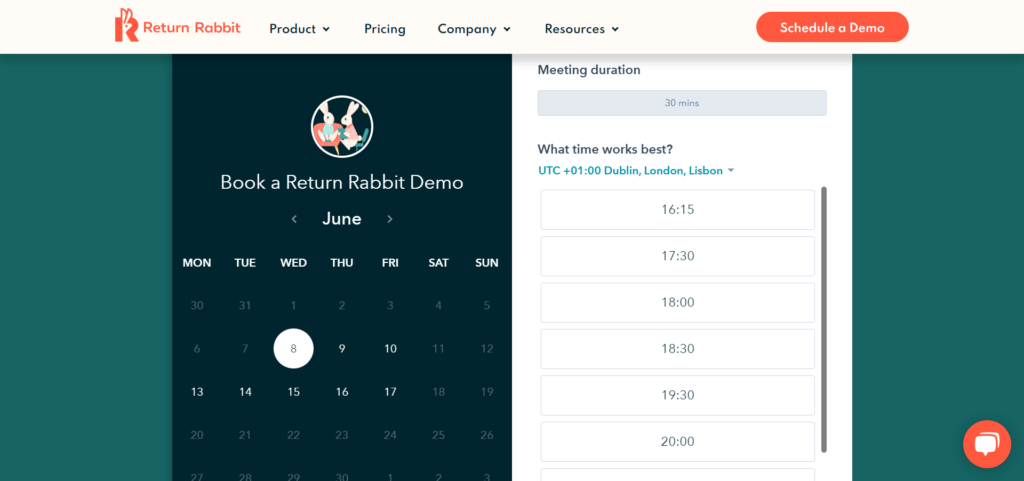


















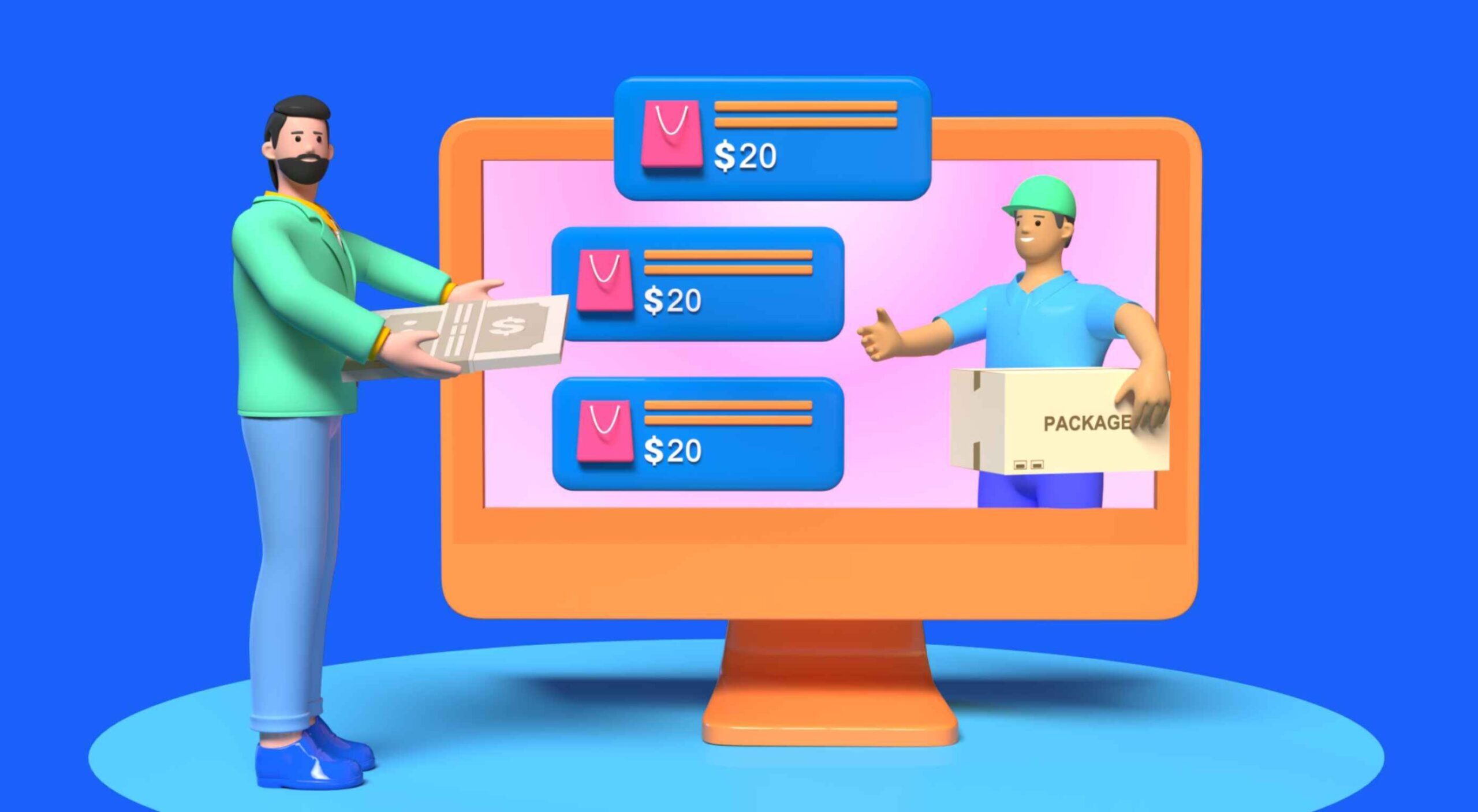 Every day design fans submit incredible industry stories to our sister-site, Webdesigner News. Our colleagues sift through it, selecting the very best stories from the design, UX, tech, and development worlds and posting them live on the site.
Every day design fans submit incredible industry stories to our sister-site, Webdesigner News. Our colleagues sift through it, selecting the very best stories from the design, UX, tech, and development worlds and posting them live on the site.